How to get rid of plum sprouts?
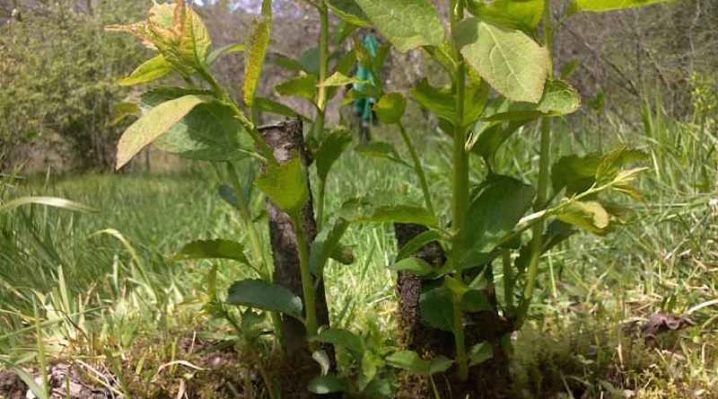
Many gardeners are interested in how to get rid of plum growth. Shoots are wild shoots that grow from the roots of the tree. Such basal processes are often spread at a tremendous speed. They can easily occupy the impressive size of the suburban area in a very short period of time. In today's article, we will find out how you can effectively get rid of plum overgrowth.

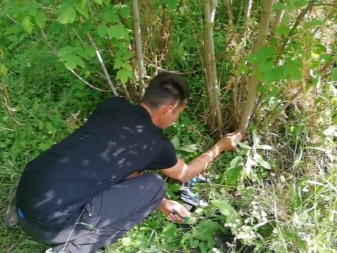
Need to remove
The plum is a native-rooted tree, which is why it produces a considerable number of basal processes, especially in comparison with plants that were grown on seed stocks. Plum shoots can grow in a very short time. Often it forms whole dense jungle. This problem arises due to several main reasons:
- the presence of bare tree roots;
- damaged plum rhizomes;
- too tight a garter in the vaccination area;
- lack of correspondence between rootstock and scion;
- full cut of the fruit tree.

Often, gardeners cannot understand why the need to remove plum shoots is explained, because after a few years it can become a normal crop that still yields a harvest. Despite this, there are a lot of different reasons why the slump must be cleaned. The shoots not only negatively affect the beautiful and harmonious appearance of well-kept gardens, but also take important nutrients from the plum itself. This is due to the fact that both the tree and the shoots have common rhizomes.
The feeding of the shoots located above the ground layer occurs throughout the growing season, taking away vital elements for itself in large volumes. This leads to the fact that the growth interferes with the proper nutrition of the tree, and significantly reduces the yield.
In addition, if you wave your hand at spreading the plum tree, it will spread too much, and it will be extremely difficult to get rid of it. That is why it is so important to systematically deal with plum sprouts.
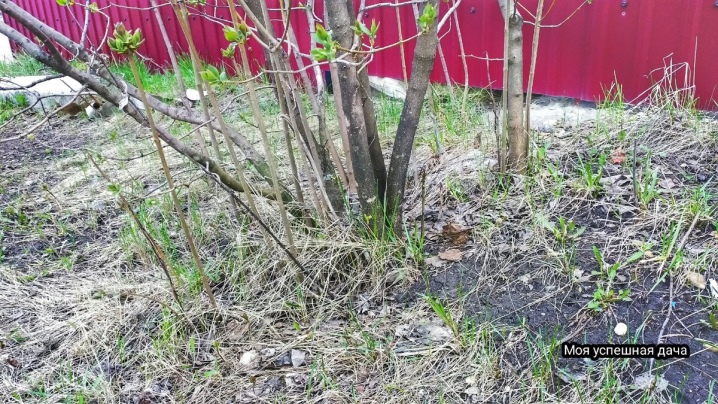
Ways to fight
To get rid of plum growth, gardeners can turn to three main methods that demonstrate high results.
- Mechanical... When referring to this method, gardening tools such as a saw, pruner, hatchet, shovel are used. Cutting or cutting of excess processes is performed.
- Treatment with special preparations based on chemicals... It is possible to remove the processes in question that have appeared in the garden through the use of special preparations. These can be herbicides that can solve the problem under consideration for a long time.
- Insulation... This popular method makes it possible to remove root plum shoots in the shortest possible time. However, it should be borne in mind that such shelters, equipped on the territory of the garden, do not look very attractive.
Let's consider each of the methods in more detail.
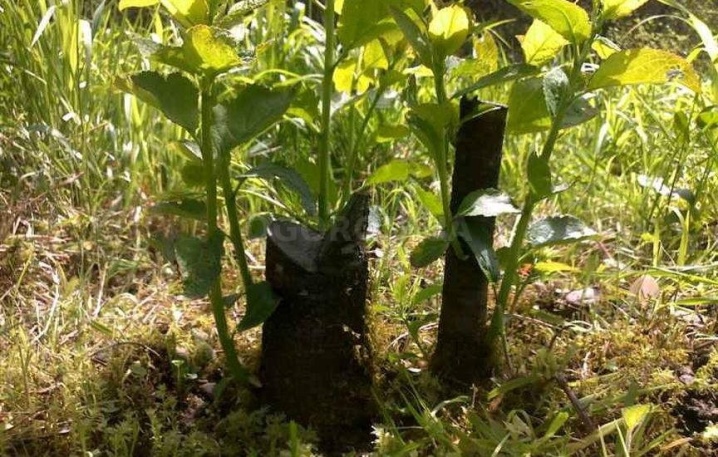
Mechanical
Many gardeners decide to remove plum shoots in the country by means of a mechanical method. It is the simplest and most affordable. The removal of unnecessary components is carried out by means of a secateurs. There are 2 main options for how to cut unwanted shoots:
- removal at soil level at the site;
- pruning in line with the roots.
It is considered more effective to remove unwanted plum shoots by cutting, when they are dug up to the original root and cut to the very base. After completing the trimming procedure, the hole is filled back with earth, and then tamped well.
The complexity of the implementation of this method lies in the fact that first it is required to remove the upper soil layer with a shovel in order to gain access to the horizontal roots, then remove the growth, and smear the cut areas with a special varnish for the garden.
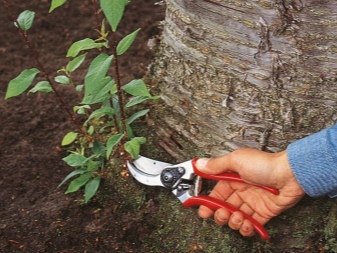

Use of chemicals
Many gardeners prefer to destroy plum growth in the garden area using special chemicals. This method is considered one of the radical ones. Very often, they turn to the method of using drugs when it is necessary to permanently remove both the growth and the old tree. Most often, popular "Arbonal" "Alsenal", "Pikloram" are used for such procedures.
If there are other fruit trees in the garden, it is better to use milder drugs. We are talking about arboricides... The most effective means are: Tornado, Hurricane, Roundup.
Gardening operations of this type are carried out in several main stages.
- First, the tree is cut down along with the undergrowth at a suitable height.... If it is not further planned to uproot the stump, then it is permissible to perform actions on the ground line.
- On the cut, you need to do 4-5 holes with a drill.
- Next, a solution of the selected chemical is prepared. The dosage indicated on the original packaging should be slightly increased.
- The finished chemical liquid should be poured into the holes made, and then covered with a film. In this state, the plants should be left for a week.
- After a week, the holes will need to be carefully drilled out, and then an additional portion of the chemical should be added to them. Already at this stage, you can see how the formed processes fade. If the obtained results are not enough, the procedure can be repeated again.
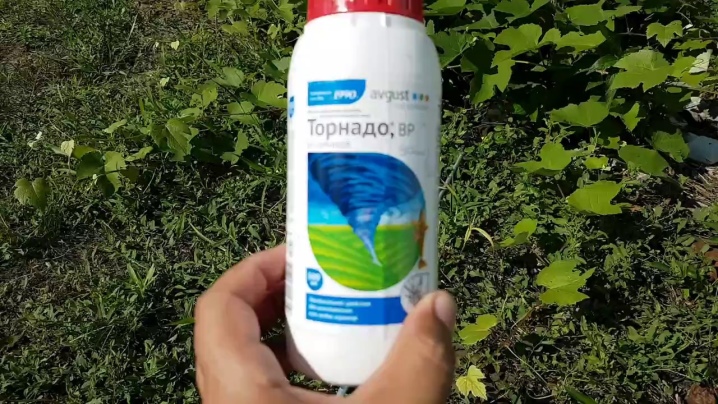
Shoot isolation
One of the main advantages of this method is its impressive efficiency. If everything is done correctly, then the thickets of unwanted garden shoots can disappear literally during the very first season. In addition, this method, which is popular among gardeners, is very easy to implement. All procedures are carried out according to the scheme listed below.
- Within a radius of 0.5 meters from the trunk of the tree, the soil is covered with cardboard sheets. After that, the materials are thoroughly moistened and trampled into the ground.
- A film and roofing material are laid out on a cardboard.
- A sand layer is poured onto the upper part of the film coating and roofing material, and then the soil layer.
On the resulting substrate, it will turn out to place a neat lawn or a decorative flower garden. None of the unwanted shoots will be able to germinate under the film and roofing material. This method is effective, but it has its drawbacks:
- the process of isolating the growth itself is quite laborious;
- from the point of view of aesthetics, this is not the most attractive of the methods.
If you use such material as spunbond in such procedures, and then plant beautiful flowers, you can get a very good result.
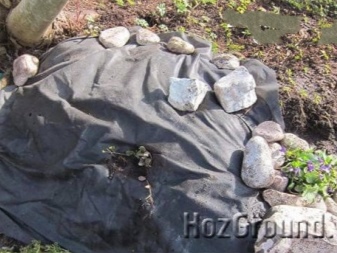

Prevention measures
It is easier to prevent the appearance of a plum shoot than to deal with it when it has already created a lot of problems in the garden. There are several ways to prevent the formation of unwanted processes.
- You should resort to digging the soil directly under the tree.
- When watering, it is recommended to avoid excessively powerful water pressure.
- In case of exposure of tree rhizomes, it is recommended to cover them with a soil layer.
- The formation of the crown must be as accurate as possible. Do not cut too many branches.
- Having completed the pruning procedure, it is advisable to coat the affected areas with a special garden varnish.
- When grafting a tree, only the highest quality stock should be used. In this case, the drain should always be under control, it will need to be monitored. If the rejection of the rootstock suddenly begins, then you will need to quickly remove it, and then carefully cover the cutting area with slaked lime or a special garden preparation.
- A stock that has already been grafted must be tied tightly using a special ribbon. In the course of the growth of the grafted plum, the harness very often cuts directly into the xylem (wood tissue), which is why the tree gives out a lot of growth. The latter process takes place so that the tree can provide itself with an additional nutritional source.
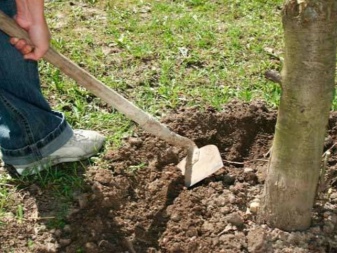
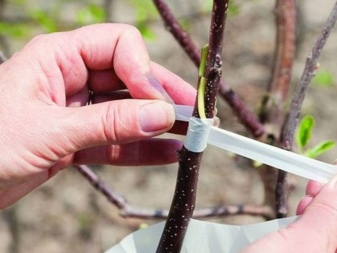
Which varieties do not grow?
Many summer residents who grow a plum garden on their plots ask the obvious question whether there are plum varieties that do not give out unnecessary shoots. Unfortunately, regardless of the variety, plum trees always give extra shoots, which must be dealt with correctly. However, different species are subject to such negative effects in different ways.
In modern horticultural farms, plum tree varieties have been identified that form wild shoots in especially large volumes. The following varieties are most susceptible to such problems:
- "Ochakovskaya yellow";
- "Hungarian ordinary";
- "Italian Hungarian";
- "Local red".
The listed types of plum give out especially abundant growth of impressive height.
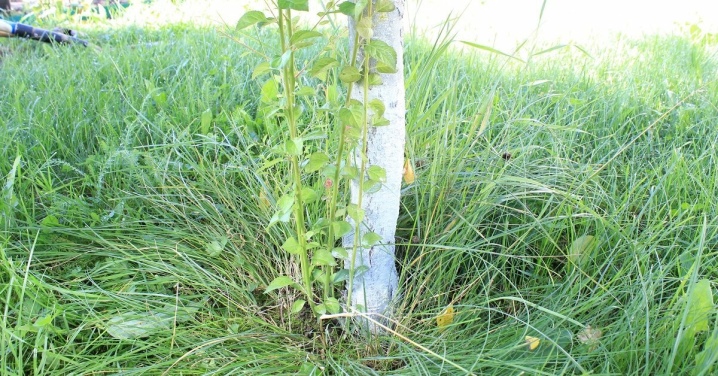
There are also such varieties of own-rooted trees, which are distinguished by a lower percentage of the appearance of unnecessary basal processes. These trees include:
- Renkold Altana;
- Stanley;
- Anna Shpet.
One should also take into account the fact that the listed plum varieties show very good yields. They are hardy, resistant to negative external factors.
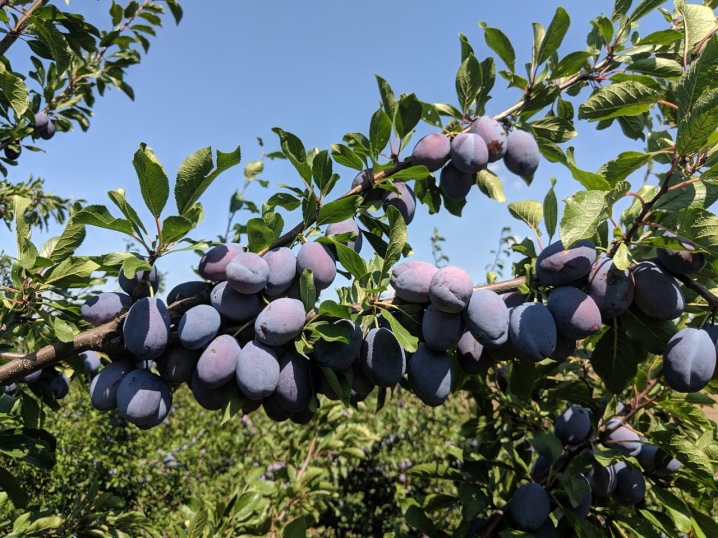






The comment was sent successfully.